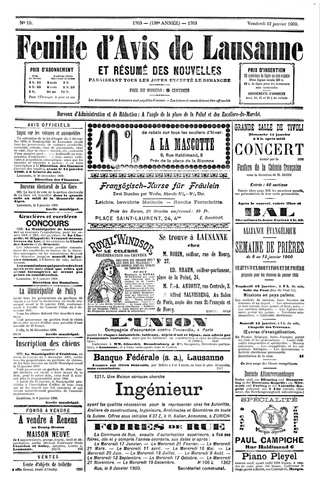
Le Temps is a Swiss French-language daily newspaper published in Berliner format in Geneva by Le Temps SA. It is the sole nationwide French-language non-specialised daily newspaper of Switzerland. Since 2021, it has been owned by Fondation Aventinus, a not-for-profit organisation.

La Croix is a daily French general-interest Catholic newspaper. It is published in Paris and distributed throughout France, with a circulation of 91,000 as of 2020.
Le Matin is a Swiss French-language daily newspaper published by Edipresse in Lausanne, Switzerland.

24 heures is a Swiss regional Swiss-French-language daily newspaper, published by Tamedia in Lausanne, Vaud. Founded in 1762 as a collection of announcements and official communications, it is the oldest newspaper in the world with uninterrupted publication.

The Tribune de Genève is a Swiss French-language, regional daily newspaper, published in Berliner format by Edipresse in Geneva.

Camera is a photography review that began its life in Lucerne, Switzerland, later distributed in many countries and languages. The magazine grew to its greatest international influence towards in latter half of its life of sixty years; on the leading edge of almost every important period in photography, Camera was often among the first publications to show the first works of now well-known photographers such as Edward Steichen, Robert Frank and Jeanloup Sieff.

Vallorbe railway station is a station at the border of Switzerland and France on the TGV Lyria line between Paris and Lausanne. It is located at the south-eastern entrance of the tunnel which tunnels one of Jura's mountain ranges, Le Mont d’Or. The station serves the municipality of Vallorbe, in the Canton of Vaud, Switzerland.

The Cinémathèque suisse, formerly the Archives cinématographiques suisses, is a Swiss state-approved non-profit foundation headquartered in Lausanne. It aims to collect, protect, study and present film archives. The Swiss Cinematheque has its archives in Penthaz and a branch office in Zürich.

Solange Ghernaouti is a professor at the University of Lausanne (UNIL) and an international expert on cybersecurity and cyberdefence. She regularly collaborates with various United Nations, European and government institutions as well as with private corporations.
LargeNetwork is a Swiss media agency and custom publisher.
Bilan is a biweekly business magazine published in Geneva, Switzerland. The magazine has been in circulation since 1989.

L'Illustré is a weekly consumer magazine published in Lausanne, Switzerland. It is one of the earliest magazines published in the country and has been in circulation since 1921.
26 minutes (26’) was a weekly French-language Swiss television comedy program starring Vincent Kucholl and Vincent Veillon. It was aired between 2015 and 2017 on RTS Un, succeeding their daily radio program 120 secondes (120’’) from 2011 to 2014 on Couleur 3.
Bolero is a fashion and lifestyle magazine based in Zürich, Switzerland. It has been in circulation since 1990 and published monthly.
Edelweiss was a Swiss monthly women's magazine published in Zürich, Switzerland. The magazine was part of Ringier. It was among the best-selling women's magazines of Switzerland. It was in circulation between 1998 and 2015.

Lucienne Peiry, born in Lausanne on 4 September 1961, holds a doctorate (PhD) in the history of art; she is a specialist in Outsider Art, an exhibition curator, a lecturer and the author of several publications. She gives lectures in both Switzerland and elsewhere in Europe, and has been teaching Outsider Art at the Swiss Federal Institute of Technology in Lausanne since 2010. Since 2016, she has also been teaching at the University of Lausanne

Jacques Pilet was born on October 18, 1943, in La Tour-de-Peilz, canton of Vaud, Switzerland is a journalist and creator of Swiss newspapers.
Pierre Philippe Naftule was a Swiss writer, producer and theatre director.

The Journal de Genève (JdG) was a French-language Swiss newspaper founded in 1826. In 1991, the Gazette de Lausanne was merged into it, after which it was titled the Journal de Genève et Gazette de Lausanne. Following financial difficulties that faced both papers, it was merged in March 1998 with the Le Nouveau Quotidien to form Le Temps.

Le Nouveau Quotidien (NQ) was a French-language Swiss daily newspaper founded in September 1991, published out of Lausanne. It was published by Edipresse, with the French newspaper Libération and the media group Ringier also having financial interest and collaboration with its publication. It was a non-regional paper, aiming to cover the interests of French-speaking Switzerland. The editor-in-chief of the paper throughout most of its life was Jacques Pilet, who was replaced in 1997 by Alain Campiotti.














